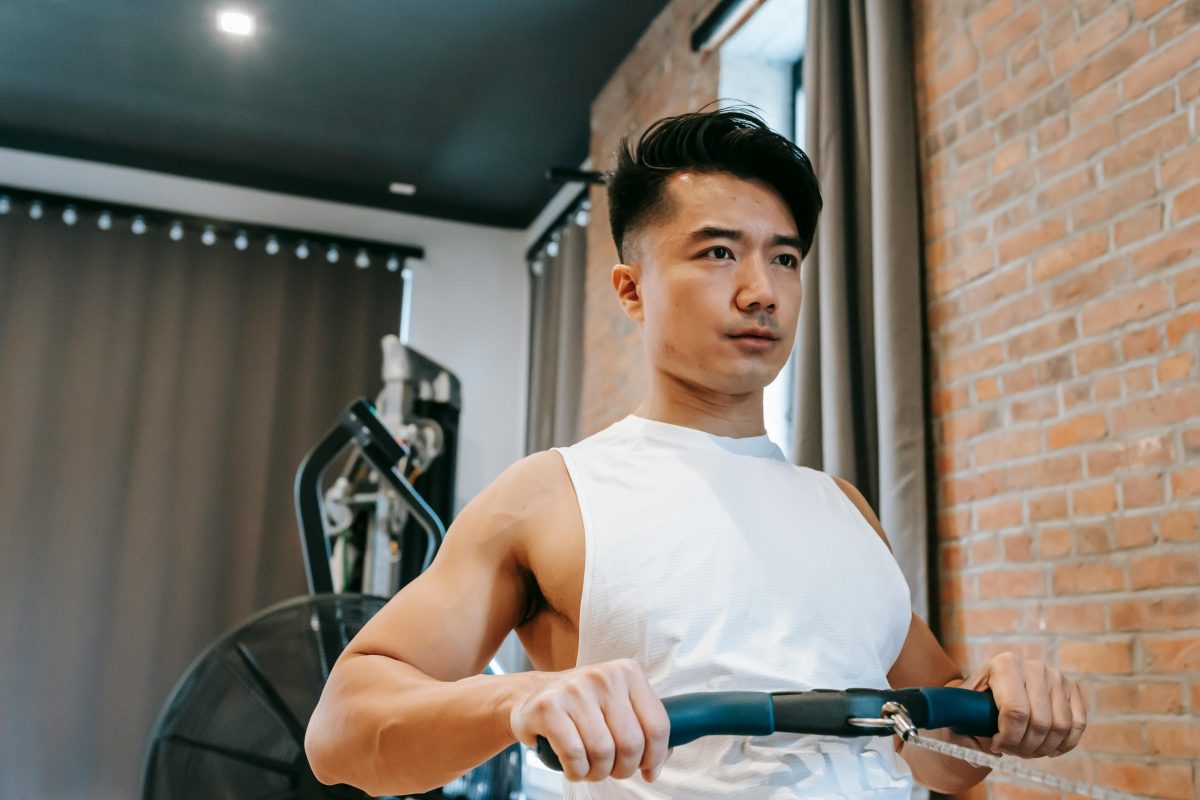Last Updated on: 14th July 2024, 09:05 am
Introduction to Rowing Machines

Rowing machines stand out as a quintessential workout tool, offering a comprehensive exercise that engages multiple muscle groups simultaneously. They mimic the natural motion of rowing a boat, ensuring a full-body workout that combines cardiovascular endurance with muscle strengthening. This unique blend not only accelerates calorie burn but also enhances overall fitness levels, making it a favorite among fitness enthusiasts.
- Mastering proper technique is crucial for maximizing the machine’s benefits while minimizing the risk of injury. Proper form ensures efficient strokes, targeting the intended muscles without straining the back or joints.
- Embracing the rowing machine with the right technique transforms it from a mere exercise tool into a powerful ally in achieving peak physical fitness. It’s an investment in your health that pays dividends in strength, endurance, and well-being.
Understanding the Basics of Rowing Technique

Mastering the rowing stroke is pivotal for harnessing the full potential of the rowing machine. The stroke can be broken down into four distinct phases: the Catch, Drive, Finish, and Recovery. Each phase plays a crucial role in the fluidity and effectiveness of your workout.
The Catch
- Positioned at the machine’s front, knees bent and shins vertical, the catch is where power begins. A common mistake is slouching, which strains the back. Instead, sit tall, engaging your core, ready to unleash power.
The Drive
- Power surges from the legs, transitioning through the back and arms. A smooth, forceful push with the legs is key. Rushing this phase or using the arms too early diminishes power and efficiency.
The Finish
- The culmination of the stroke, where legs are extended, and the handle is pulled to the lower ribs. Elbows should be drawn past the body, ensuring a strong, complete motion. Leaning back excessively here is a frequent error, compromising posture and reducing the effectiveness of the workout.
The Recovery
- This phase is about resetting and preparing for the next stroke. Extend your arms, hinge forward from the hips, and then bend the knees to glide forward. Rushing recovery or moving jerkily disrupts rhythm and can lead to fatigue faster.
Understanding and refining your technique in each phase ensures a balanced, effective workout. Avoiding common mistakes not only enhances efficiency but also significantly reduces the risk of injury. With practice, the rowing stroke becomes a seamless, powerful motion that propels you towards your fitness goals.
Setting Up Your Rowing Machine for Success

Before diving into the nuances of rowing technique, ensuring your rowing machine is properly adjusted for your body size and strength level is paramount. This foundational step cannot be overstated. An ill-fitting machine can not only hinder your performance but also increase the risk of injury.
- Start by adjusting the seat and footrests to align with your leg length, allowing for a comfortable, full range of motion during each stroke. This adjustment ensures that you can fully extend your legs without straining, laying the groundwork for a powerful drive phase.
- Your feet should be securely fastened in the footrests, with the straps tightened just over the widest part of your foot. This secure placement provides the stability needed to transfer power efficiently from your legs through the rest of your body.
- The seat should position you so that, at the catch phase, your shins are vertical, and you’re poised to push back powerfully. Proper foot placement and seat positioning are not just about comfort; they are about maximizing the effectiveness of every stroke, ensuring that each movement is a step towards achieving your fitness goals.
By taking the time to adjust your rowing machine to fit your body’s unique dimensions and strength level, you’re setting the stage for a more effective, enjoyable, and safe workout. Remember, success on the rowing machine begins long before the first stroke. It starts with a commitment to setting up your equipment to complement your body’s capabilities, ensuring that every row propels you closer to your fitness aspirations.
Mastering the Catch Phase

The Significance of a Strong Start
- A powerful start sets the tone for the entire stroke. At the catch, your body is coiled, ready to unleash energy. This moment is not just about beginning; it’s about initiating with purpose and strength. A strong start propels you forward, maximizing the efficiency of your stroke from the outset.
Positioning Your Body for Maximum Efficiency
- Proper body alignment is crucial. Sit tall, with your core engaged and shoulders relaxed. Your shins should be vertical, and your heels slightly lifted, ready to drive back. This position is your power stance—it ensures that you are ready to convert every bit of effort into motion.
Exercises to Improve Flexibility and Strength for the Catch
- To enhance your catch, focus on exercises that build leg, core, and back strength. Squats and deadlifts fortify your legs and back, essential for a powerful drive. Planks and other core exercises improve stability, allowing for a more controlled and effective catch. Flexibility exercises, like yoga or dynamic stretching, ensure your muscles are limber and ready for the full range of motion required.
Mastering the catch phase is about more than just a strong start; it’s about setting up each stroke with precision and power. By focusing on body positioning and bolstering your strength and flexibility, you lay the groundwork for a rowing technique that is both efficient and effective. This foundation not only enhances your performance on the rowing machine but also minimizes the risk of injury, ensuring a smoother path to achieving your fitness goals.
Optimizing the Drive Phase for Maximum Efficiency

The Role of Legs, Core, and Arms in the Drive
The drive phase is where the magic happens. It starts with the legs, the powerhouse of your stroke. A forceful extension of the legs propels you backward, harnessing the bulk of the power. But it doesn’t stop there. The core then takes over, maintaining stability and transferring energy from the legs to the upper body. Finally, the arms complete the motion, pulling the handle towards the torso with a strong, fluid movement. This sequential activation of legs, core, and arms maximizes power and efficiency, turning each stroke into a symphony of strength.
Sequential Movement for Power and Efficiency
Imagine a wave of energy flowing through your body. It begins at the feet, surges through the legs, ripples across the core, and culminates in the arms. This isn’t just poetic—it’s the essence of an efficient drive phase. Sequential movement ensures that each muscle group activates at the optimal moment, maximizing power output and minimizing energy waste. It’s about working smarter, not harder.
Drills to Enhance Leg Drive and Core Stability
To fortify your leg drive, practice squats and leg presses. These exercises build the strength necessary for that initial, powerful push. For core stability, nothing beats planks and Russian twists. They sculpt a solid midsection, ready to transfer power seamlessly between the lower and upper body. Incorporating these drills into your routine not only boosts your performance on the rowing machine but also contributes to a more balanced, injury-resistant physique.
Mastering the drive phase is a game-changer. It transforms each stroke from a mere movement into a powerful, efficient force. With the right focus on legs, core, and arms, plus dedicated practice, you’ll not only see improvements in your rowing but in your overall fitness journey. Remember, every stroke is an opportunity to be better than the last. Seize it.
Finishing Strong and Efficient Recovery

Perfecting the Finish Phase
Executing the finish phase with precision is vital. As you complete the drive, smoothly transition into the finish by pulling the handle to your lower ribs. Keep your wrists flat and elbows tracing back, not flaring out. This ensures maximum engagement of your back muscles, sealing the deal on a powerful stroke.
Transitioning into Recovery
Smoothness is key during the shift to recovery. Extend your arms first, then lean forward from the hips, and finally, bend your knees to glide smoothly back to the catch position. This fluid motion conserves energy and sets a steady rhythm, preparing you for the next powerful drive.
Breathing Techniques for Recovery and Endurance
- Inhale during the recovery phase, filling your lungs with air.
- Exhale forcefully during the drive. This rhythmic breathing pattern not only oxygenates your muscles but also keeps you focused and in sync with the rowing machine’s cadence.
By honing your technique at the finish and mastering the transition into recovery, you ensure that each stroke is a testament to your strength and stamina. Coupled with effective breathing, your rowing sessions become a dynamic dance of power and grace, driving you towards your fitness zenith.
Advanced Techniques and Common Pitfalls

Incorporating Power Strokes and Interval Training
For those looking to maximize efficiency, blending power strokes with interval training is a game-changer. Power strokes, characterized by their intensity and force, enhance muscle engagement and cardiovascular effort. When alternated with periods of lighter rowing, they create a high-intensity interval training (HIIT) effect. This method not only boosts endurance but also accelerates calorie burn, making your workout doubly effective.
Common Pitfalls in Technique and Corrections
- Neglecting the leg drive: Relying too heavily on the upper body reduces efficiency and increases injury risk. Focus on pushing with the legs before pulling with the arms.
- Poor posture: Slouching or overextending at the finish. Maintain a strong, upright position with a slight lean back at the finish to avoid this.
Regularly checking your form and making adjustments is crucial for long-term improvement.
The Importance of Consistency and Patience
Mastering rowing technique doesn’t happen overnight. It demands consistency and patience. Regular practice, with a focus on form and gradual progression, is key to unlocking your full potential on the rowing machine. Celebrate small victories along the way, and don’t rush the process. Over time, consistent effort will lead to significant gains in strength, endurance, and rowing efficiency, transforming your workouts and your fitness journey.
By incorporating advanced techniques like power strokes and interval training, correcting common pitfalls, and committing to consistent practice, rowers at all levels can achieve maximum efficiency and effectiveness in their workouts. Remember, the journey to mastering rowing technique is a marathon, not a sprint. Patience, persistence, and a focus on form will guide you to success.
In Closing
Rowing maximizes fitness through precision and power. This journey marries challenge with reward, demanding patience yet offering profound gains in strength and endurance. By mastering technique and embracing consistent practice, rowers unlock a path to peak physical condition. Let each stroke be a step toward your ultimate fitness goals, propelled by dedication and the pursuit of excellence.
Rowing Machine: Techniques for Maximum Efficiency FAQs
Rowing on a machine can significantly help with weight loss as it provides a high-intensity, full-body workout that burns calories efficiently. By engaging multiple muscle groups, it increases your heart rate and boosts metabolism, contributing to fat loss. For best results, combine rowing with a balanced diet and other forms of exercise.
Increasing rowing efficiency on the machine can be achieved by focusing on your technique, particularly the timing and coordination of your strokes. Practicing drills that isolate parts of the stroke, such as leg drives or arm pulls, can help refine your overall technique. Additionally, incorporating interval training into your routine can improve cardiovascular fitness and muscular endurance, leading to more efficient rowing.
Tracking progress on a rowing machine can be done by monitoring your distance, time, stroke rate, and intensity level during each session. Many modern rowing machines come equipped with digital monitors that provide this information, allowing you to set goals and track improvements over time. Recording your workouts in a log or using a fitness app can also help visualize your progress and keep you motivated.
The resistance level on a rowing machine should be set to a level that challenges you without compromising your technique. Beginners should start with a lower resistance to focus on mastering form before gradually increasing the intensity. It’s important to adjust the resistance according to your fitness level and the goals of your workout, whether it’s endurance training or strength building.
To see improvements in fitness, it’s recommended to row three to four times a week, allowing for rest or cross-training on other days. Consistency is key to building endurance and strength over time. Varying your workouts in intensity and duration can also prevent plateaus and keep the training challenging.
It is necessary to warm up before rowing to prepare your muscles and cardiovascular system for the workout, reducing the risk of injury. A good warm-up should include light cardio, such as jogging or cycling for 5-10 minutes, followed by dynamic stretches focusing on the legs, back, and arms. This not only enhances performance but also improves flexibility and range of motion for the rowing session.
Common mistakes to avoid while using a rowing machine include slouching, pulling with the arms too early, and not using the legs sufficiently. Correcting these errors involves maintaining a strong, upright posture, initiating the drive with the legs, and ensuring the arms finish the movement. Avoiding these mistakes will help prevent injury and ensure a more effective workout.
The correct posture for rowing on a machine involves sitting up straight with a slight lean forward from the hips, not the waist. This position allows for efficient power transfer from your legs to the rowing machine without straining your back. Keeping your shoulders relaxed and down, away from your ears, will help maintain proper form throughout the stroke.
The correct sequence of movements in a rowing stroke is legs, core, arms on the drive phase, and arms, core, legs on the recovery phase. This sequence ensures the most efficient use of your muscles, maximizing power while minimizing fatigue. It’s crucial to maintain a smooth, continuous motion throughout the stroke to keep the rowing machine’s flywheel spinning consistently.
Rowing primarily targets the legs, back, and arms, making it an effective full-body workout. The leg muscles, including the quadriceps and hamstrings, are engaged during the drive phase, while the back and arm muscles, such as the latissimus dorsi and biceps, are utilized during the pull phase. Additionally, rowing also works the core muscles throughout the stroke, enhancing stability and power.
Orlando is a all round athlete from Australia, now resident in Germany. His sports of passion of American Football(Offensive line), weight training and indoor rock climbing where he uses his 195cm wing span to his advantage.



